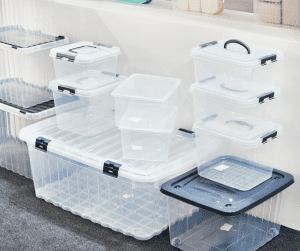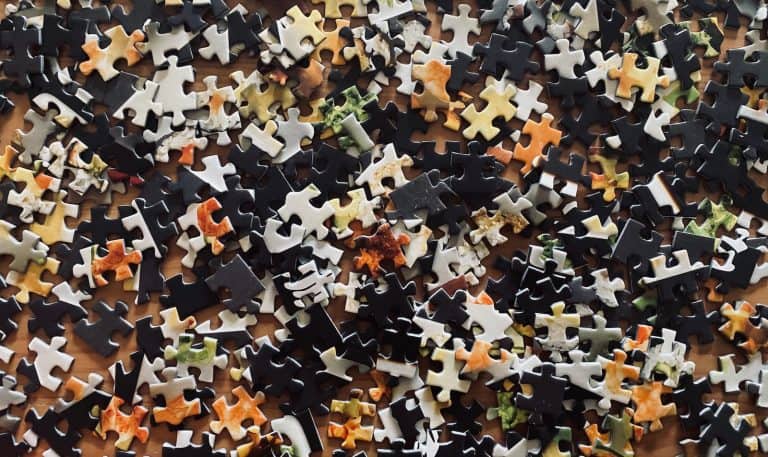Do you have a jigsaw puzzle that’s been sitting in your closet for years, waiting to be put together? Maybe you’ve just finished assembling your latest puzzle and don’t know how to store it, so it doesn’t get messed up. How to store jigsaw puzzles? Well, look no further! In this blog post, we will discuss 10 different ways to store jigsaw puzzles. So whether you have a small puzzle or a huge one, we have the perfect solution for you!
Why store jigsaw puzzles in the first place

Jigsaw puzzles are a great way to pass the time, whether you’re by yourself or with family and friends. They can be challenging and frustrating, but also very rewarding. But once you’re done with a puzzle, what do you do with it? If you just leave it out, chances are it will get damaged or lost over time. That’s why it’s important to store your puzzles properly!
The benefits of storing jigsaw puzzles
There are several benefits to storing jigsaw puzzles, including:
- Keeping them organized, so you can easily find the one you want to do next
- Protecting them from damage so they’ll last longer
- Freeing up space in your home
How to store jigsaw puzzles
Now that we’ve gone over why it’s important to store your jigsaw puzzles, let’s get into how to do it! Below are 10 great ways to store your puzzles, whether you have a small collection or a large one.
1. Puzzle mats
Puzzle mats are specially-designed mats that you can roll up and store your puzzle in. They come in different sizes to accommodate different puzzle sizes, and they have a smooth surface that’s perfect for assembly and disassembly. You can store puzzles and also protect them from damage and dust.
2. Puzzle boxes
Storing puzzles in boxes is a popular and straightforward option. You can buy special puzzle boxes that are designed to hold puzzles, or you can use any type of box that’s the right size. Just make sure to line the box with tissue paper or bubble wrap to keep the pieces from shifting around.
3. Ziploc bags
For small puzzles or puzzle pieces, Ziploc bag is such a great option. You can seal them up to keep the pieces from falling out, and they take up very little space. This makes your puzzle safe and portable so you can take it with you on the go.
4. Photo boxes
If you have a lot of puzzles, photo boxes are a great option for storage. They’re usually larger than regular cardboard boxes, so they can hold more puzzles. And you can label them with photos of the completed puzzle so you know which one is which.
5. Wrapping paper tubes
You can store puzzle pieces in wrapping paper tubes! Just cut the tube to the size you need, and then seal up the ends. You can even decorate the outside of the tube to make it more fun.
6. Shoe boxes
Organizing puzzles in shoe boxes are a great solution if you have a lot of puzzles. You can keep multiple puzzles in each box, and they stack nicely, so they don’t take up a lot of space. Make sure to label the outside of each box so you know what’s inside.
7. Plastic containers

Making plastic containers as a place to store jigsaw puzzles is such a great idea. You can usually get these at the dollar store, and they come in different sizes. Just make sure to put a piece of cardboard or foam in the bottom so the pieces don’t shift around.
8. Plastic storage bags
If you want to save space and keep your puzzles organized, use a sandwich bag for small kids’ puzzles and gallon-sized bags for larger jigsaw puzzles. Just put all of the pieces in the bag, squeeze out the air, and store them in a basket or on a shelf.
9. Drawers
If you’re keen on keeping your puzzles out of plain sight, consider storing them away in drawers. You can use any type of drawer, whether it’s a dresser drawer or a nightstand. Just make sure to line the drawer with something soft so the pieces don’t get scratched.
10. Stackable baskets
A great way to store puzzles is in baskets that can be stacked on top of each other. This way, you can have multiple puzzles set up and ready to go, and when you’re done with one, just put it in the basket and grab another. This is less space-efficient than some of the other options, but it’s a great way to keep your puzzles organized.
All your puzzles need is a little bit of love and care, and with these 10 great storage options, you can keep them in tip-top shape for years to come. So get organized and enjoy those puzzle-solving sessions!
FAQs about storing jigsaw puzzles
Q: What’s the best way to store puzzles that are in progress?
A: If you’re working on a puzzle and want to take a break, the best way to store it is on a flat surface. You can put it on a table or the floor, and then cover it with a cloth so the pieces don’t get moved around.
Q: What’s the best way to store completed puzzles?
A: Once you’ve finished a puzzle, you can glue it and frame it or put it in a special puzzle box for storage. If you’re not planning on displaying it, wrapping it in the acid-free paper is a good way to protect it from damage.
Q: How can I keep my puzzles from getting dusty?
A: If you’re worried about dust, you can store puzzles in plastic bags or containers. You can also put them in a closet or cabinet where they’ll be out of the way and less likely to get dusty.
Q: What’s the best way to store puzzles that I’m not using right now?
A: If you’re not currently working on a puzzle, the best way to store it is in a box or container. You can put it on a shelf or in a closet, and then just pull it out when you’re ready to work on it again.
Take Away: How to store jigsaw puzzles
There are a lot of great ways to store jigsaw puzzles, and it really depends on how many puzzles you have and how much space you have to work with. If you’re looking for a quick and easy solution, Ziploc bags are great. For a more permanent solution, consider using photo boxes or plastic containers. And if you want to save space, consider using stackable baskets or drawers. Whatever method you choose, just make sure to label your puzzles, so you can easily find them when you’re ready to work on them again!
Other suggested articles:
Discover Top 6 Travel-Friendly Jigsaw Puzzle Storage Solutions

